Abstract
Dissolved aromatic hydrocarbons were found to decrease growth rate and maximum cell density of marine bacteria in batch cultures. The magnitude of the decrement was observed to be a function of concentration of the hydrocarbon and inherent toxicity. The inherent toxicity was observed to increase inversely with solubility such that naphthalene at 100 muM concentration demonstrated a toxic effect similar to benzopyrene at 0.02 muM. A partial oxidation product of naphthalene was found to be more effective in decreasing growth parameters than naphthalene at equivalent concentrations and to cause complete cessation of growth at the higher concentrations permitted by its polar structure.
Full text
PDF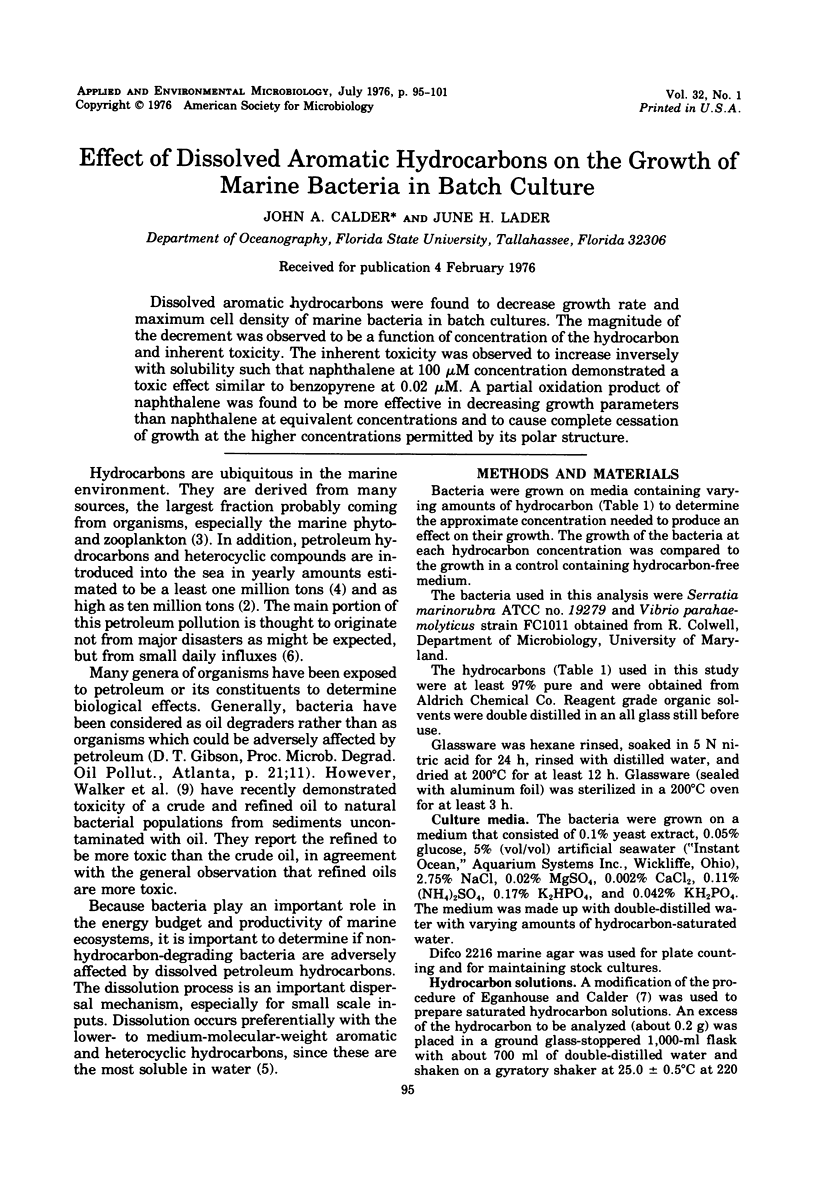
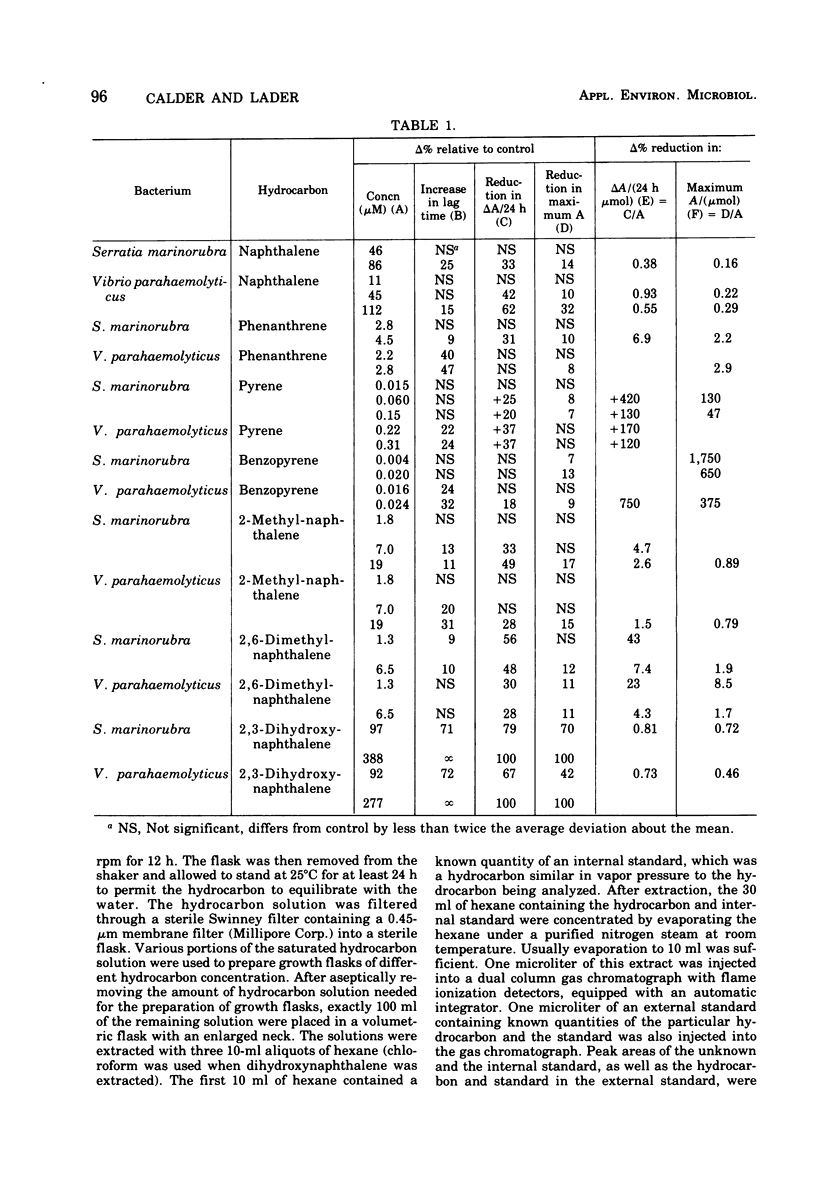
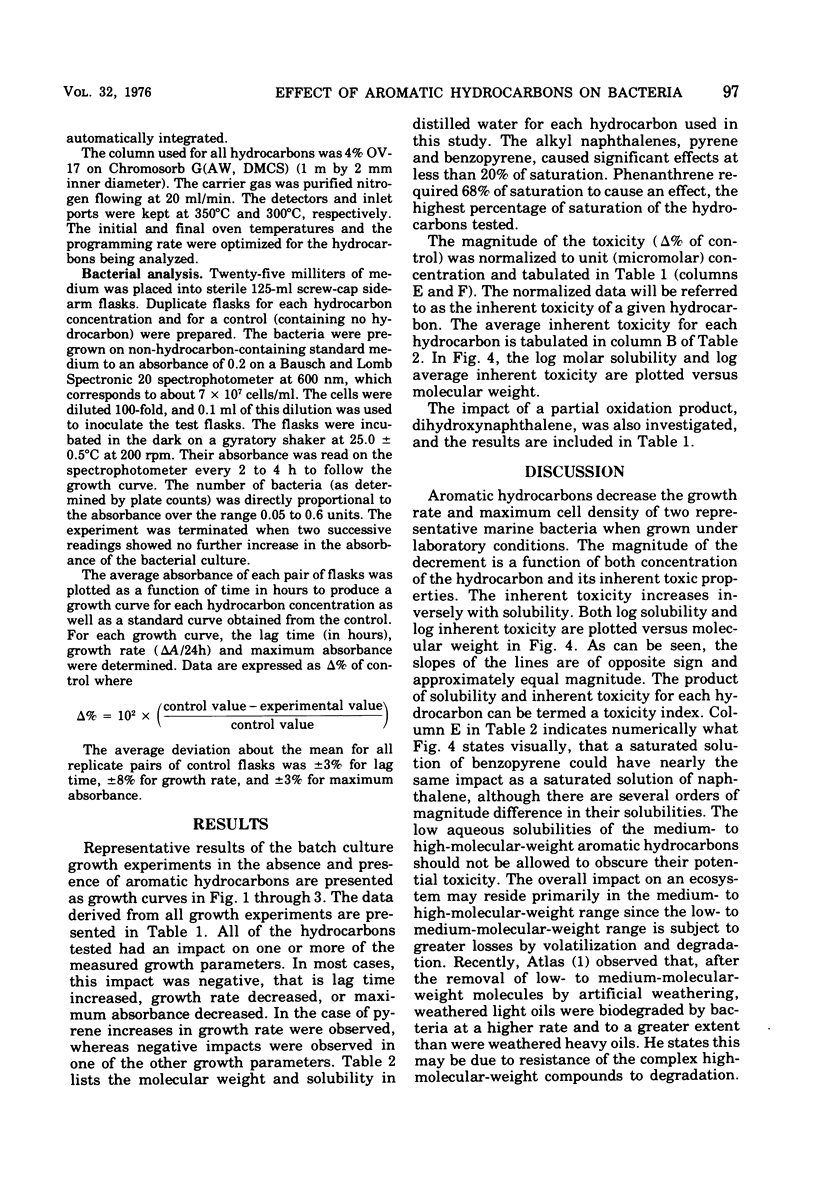
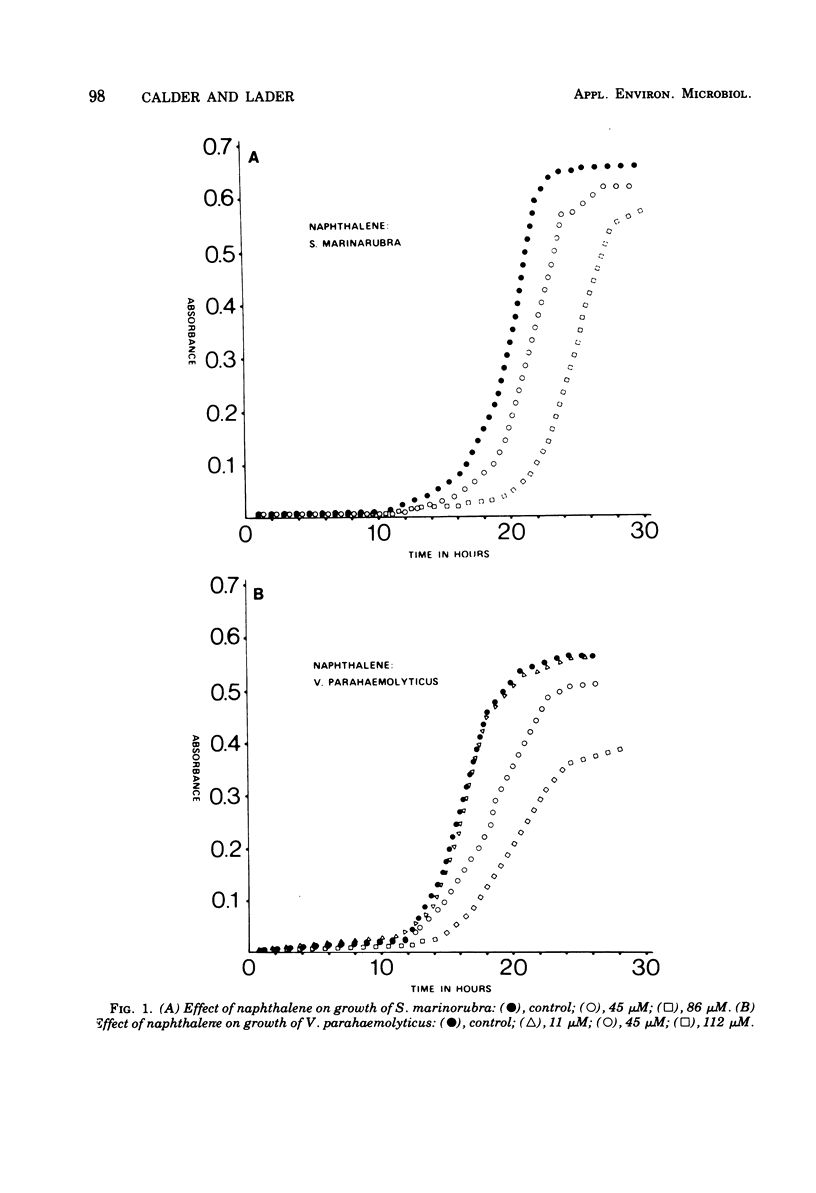
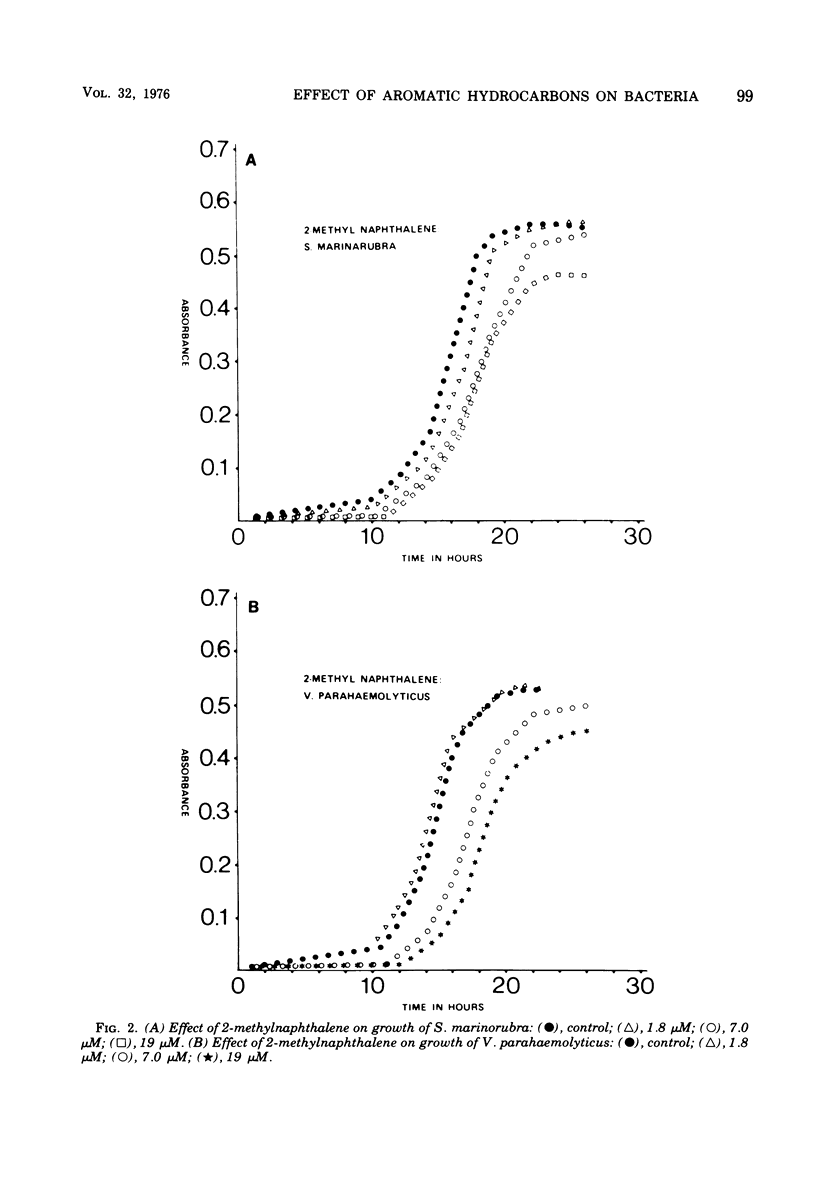
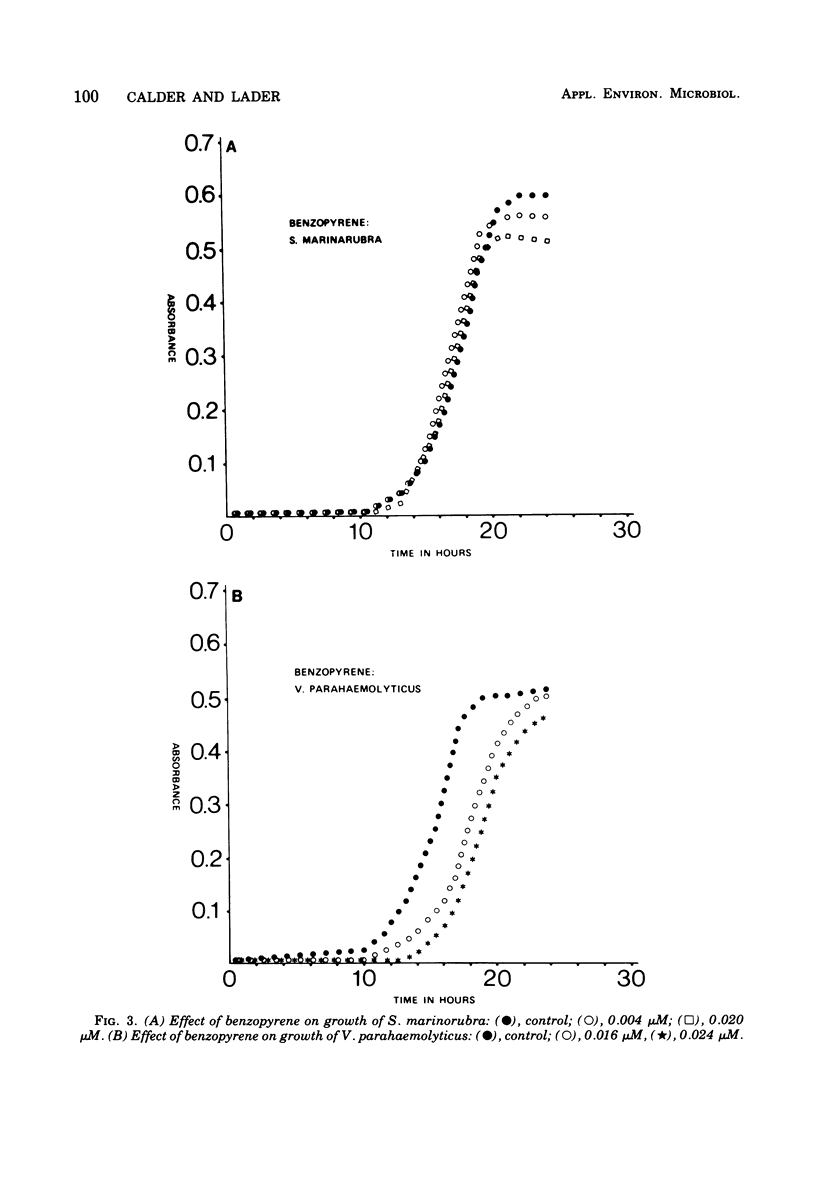
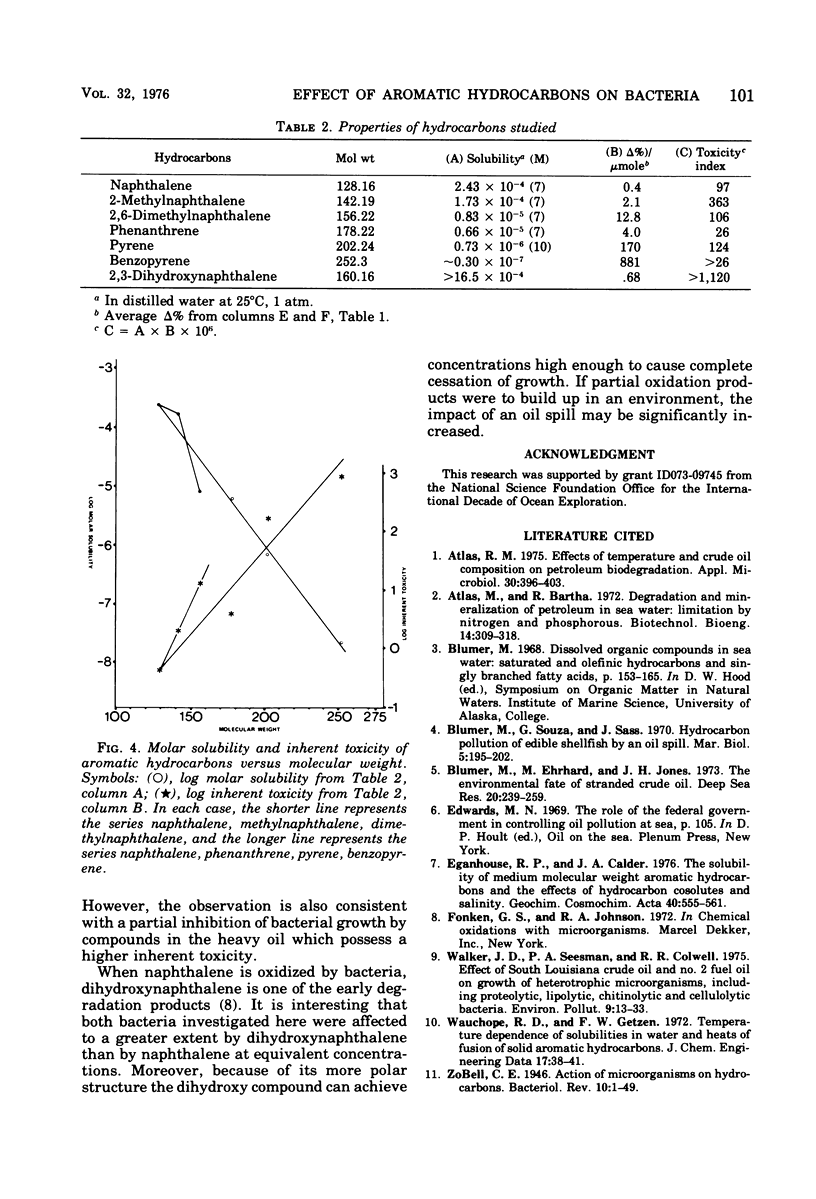
Selected References
These references are in PubMed. This may not be the complete list of references from this article.
- Atlas R. M., Bartha R. Degradation and mineralization of petroleum in sea water: limitation by nitrogen and phosphorous. Biotechnol Bioeng. 1972 May;14(3):309–318. doi: 10.1002/bit.260140304. [DOI] [PubMed] [Google Scholar]
- Atlas R. M. Effects of temperature and crude oil composition on petroleum biodegradation. Appl Microbiol. 1975 Sep;30(3):396–403. doi: 10.1128/am.30.3.396-403.1975. [DOI] [PMC free article] [PubMed] [Google Scholar]
- Zobell C. E. ACTION OF MICROORGANISMS ON HYDROCARBONS. Bacteriol Rev. 1946 Mar;10(1-2):1–49. [PMC free article] [PubMed] [Google Scholar]


